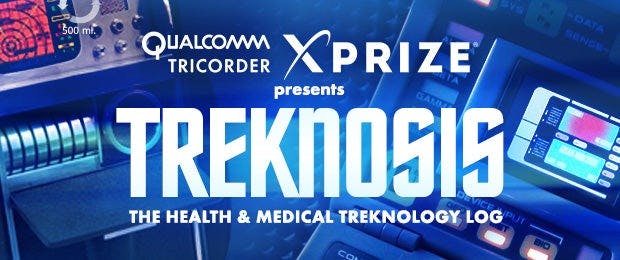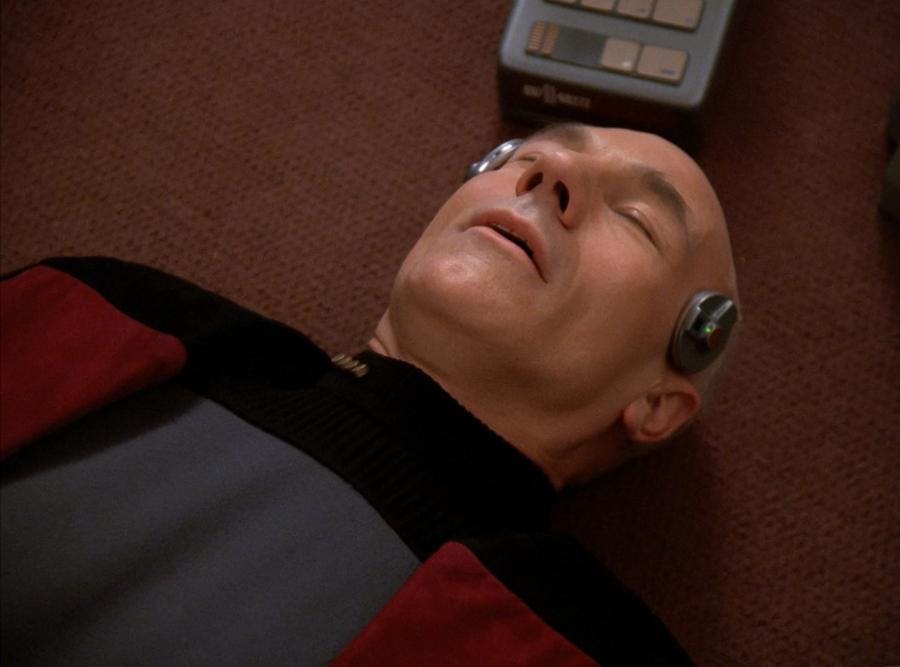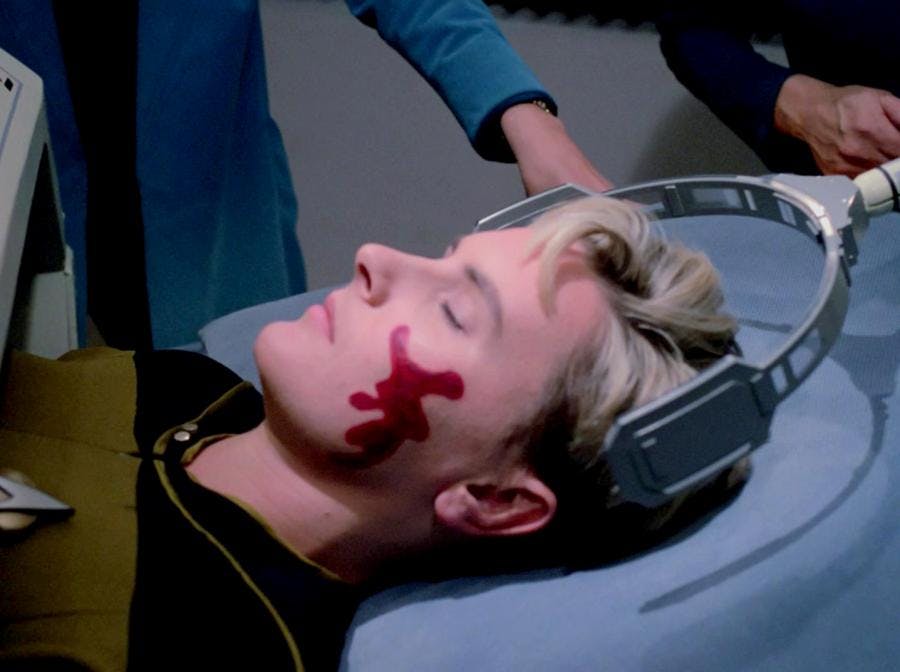Published May 14, 2014
TREKNOSIS: Get Me A Cortical Stimulator, Stat!
TREKNOSIS: Get Me A Cortical Stimulator, Stat!

Ever had nightmares about falling asleep at the wheel? Or felt your eyelids start to gain serious weight after eight hours in the driver's seat on a long road trip? Sure, coffee might help – at least for a while – but what about the nasty jitters and inevitable crash the caffeine will eventually foist upon you? What if there was another way to stay on your toes?
Believe it or not, the United States Air Force is experimenting with low-powered electrical shocks to keep drone control officers awake and alert instead of caffeine, says the Boston Globe. Drone control's a tough job, but not for the reasons you'd expect. Flying by joystick can start to get boring if you're not actually on the plane, for starters. You can't feel the bump and jostle of the wind you're cutting through so you’re reduced to staring at a set of screens and gauges...and screens and gauges...and screens and gauges...YAWN...zzzzzzzzz.
And what happens if you're assigned a target? Someone else has to look at your video feed and comb through it for clues, trying to distinguish between a civilian farmer with a rake, and a hostile with a surface-to-air missile launcher. That takes serious concentration cause nobody wants to make the wrong call there. Would a case of the caffeine shakes help or hurt a control officer making a literal life-or-death decision on the eighth hour of their shift? The Air Force believes it would hurt, and has started looking into the benefits of zapping people instead of caffeinating them.
That's not even the craziest part. Their research shows that electric shocks actually seem to work better than caffeine and lack all the jittery, heart-racing, crash-prone side effects of a cup of joe. If electricity can keep us awake and alert, what else can it do?
Does anyone else hear Star Trek: The Next Generation’s Dr. Beverly Crusher ordering "eighty-five microvolts" to Nurse Ogawa operating a cortical stimulator?

Every day we're making progress into functional neuroimaging. Not just seeing what the brain's structure looks like, but which parts do what – while we're busy using them. What makes this useful? When it comes right down to it, all brain activity is just the firing of neurons: electrical impulses jumping from one cell to another. Look at an apple and specific sets of neurons fire, coming together to make sense of your optic nerve input, your stored knowledge, and your cognitive centers to identify what you're seeing – red, round with memories of taste, sweet or tart. Flex your thumbs and whole different sets of neurons are at work, sending commands to specific muscles. There are entire chunks of the brain devoted to nothing but keeping the lights on, as it were, making sure all your internal organs are doing what they're supposed to, every second of every day.
Neurons, firing electrical impulses at each other. What happens if they misfire, or go dark? With the right knowledge and technology, couldn't we jumpstart them back up again? Say we wanted to rehabilitate sufferers of neural trauma by precisely stimulating key areas of a healthy cortex for productivity or pleasure, or even...reversing brain death.
Seriously! Suppose a sentient embodiment of evil decides to get fresh while you're on an away mission and kills you (RIP, Tasha Yar). What if there's an area of your neural tissue that just needs to be zapped correctly with the right amount of electricity in order to kick start the rest of your brain? I'm betting that's what a real-life cortical stimulator would do.

Sound a little scary? Probably, but if it means being able to cheat death, I'm willing to give it a shot. Just look at what it did for Deanna Troi when Dr. Crusher revived her from clinical death in “Man of the People.” Or when Captain Picard was revived after his artificial heart malfunctioned in “Tapestry.” Unfortunately, the cortical stimulator, as Dr. Crusher knows it on TNG, is still a ways off.
Fortunately, the Air Force has found a way to electrically stimulate the cortex to useful ends in the here and now, even though the results aren't as dramatic as resurrection from the brink of death. Now before anyone with an overactive imagination starts crying Nurse Ratched, here are some numbers that might be of interest: a standard electroconvulsive therapy (otherwise known as shock therapy) dose is somewhere in the range of 800 milliamperes, while the Air Force tests were conducted at a strength of 1 milliampere. At worst, the current seems to produce a mild tingle or, worst case, the electrodes themselves might get slightly itchy.
Of course, we've got a lot of mapping, research and testing to do before we can revive someone after Armus has had his way with them, but I think we're getting there. For now, I'll take being able to stay awake and fully focused for more than 24 hours at a time without ever reaching for a caffeine fix. Maybe Starbucks should explore investing in mocha electrode development?
source: The Boston Globe
Jon Sung is a contributing writer for XPRIZE and copywriting gun-for-hire to startups and ventures all over the San Francisco Bay area. When not wrangling words for business or pleasure, he serves as the first officer of the USS Loma Prieta, the hardest-partying Star Trek fan club in San Francisco.XPRIZE is an innovation engine. We design and operate prize competitions to address global crises and market failures, and incentivize teams around the world to solve them. Currently, we are operating numerous prizes including the $30M Google Lunar XPRIZE, challenging privately funded teams to successfully land a robot on the Moon’s surface, and the $10M Qualcomm Tricorder XPRIZE, challenging teams around the world to create a portable, wireless, Star Trek-inspired medical device that allows you to monitor your health and medical conditions anywhere, anytime. The result? Radical innovation that will help us all live long and prosper. Sign up today to join our mission, be a part of our campaign and win collectibles at: tricorderfederation.org.




